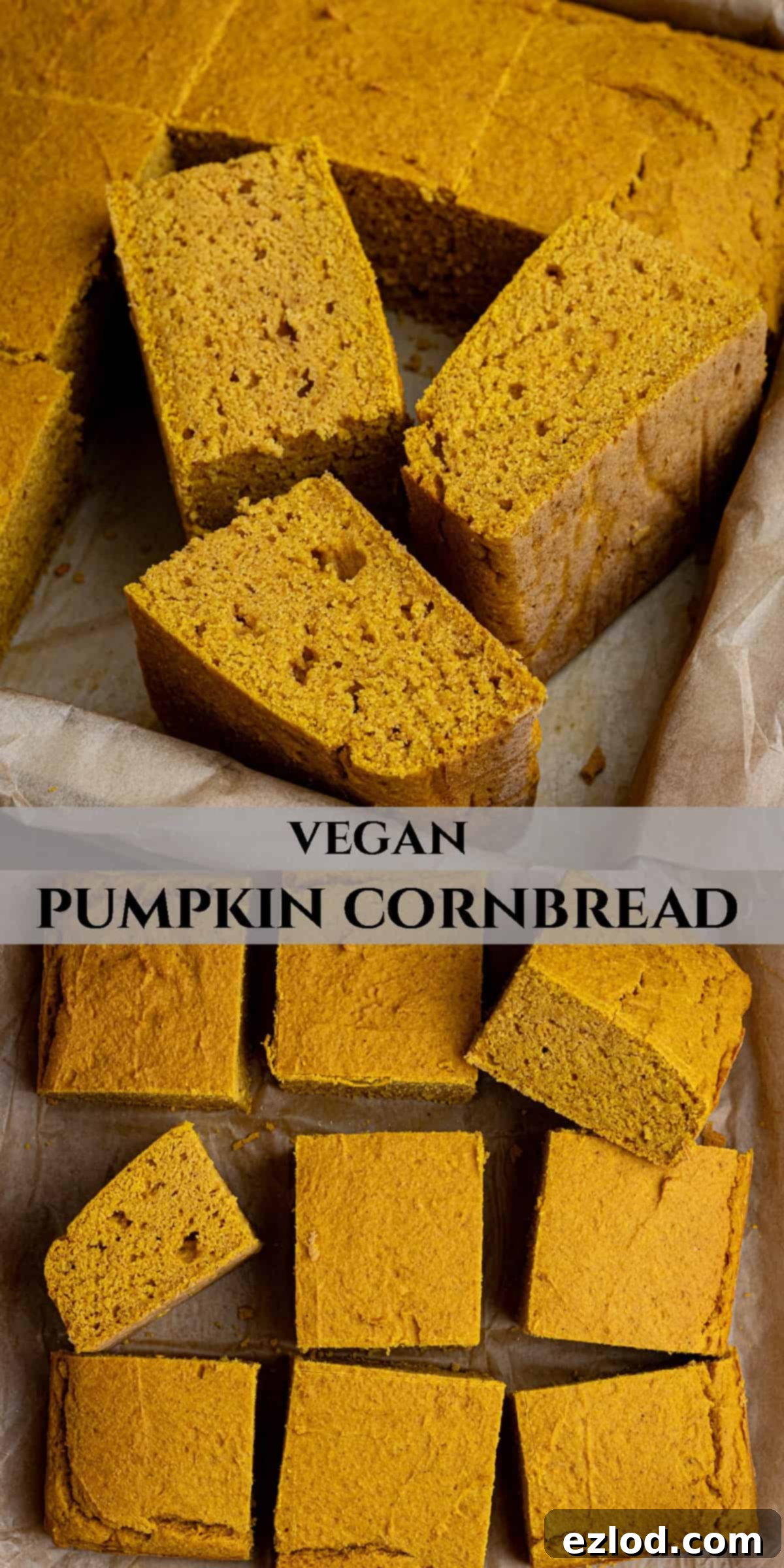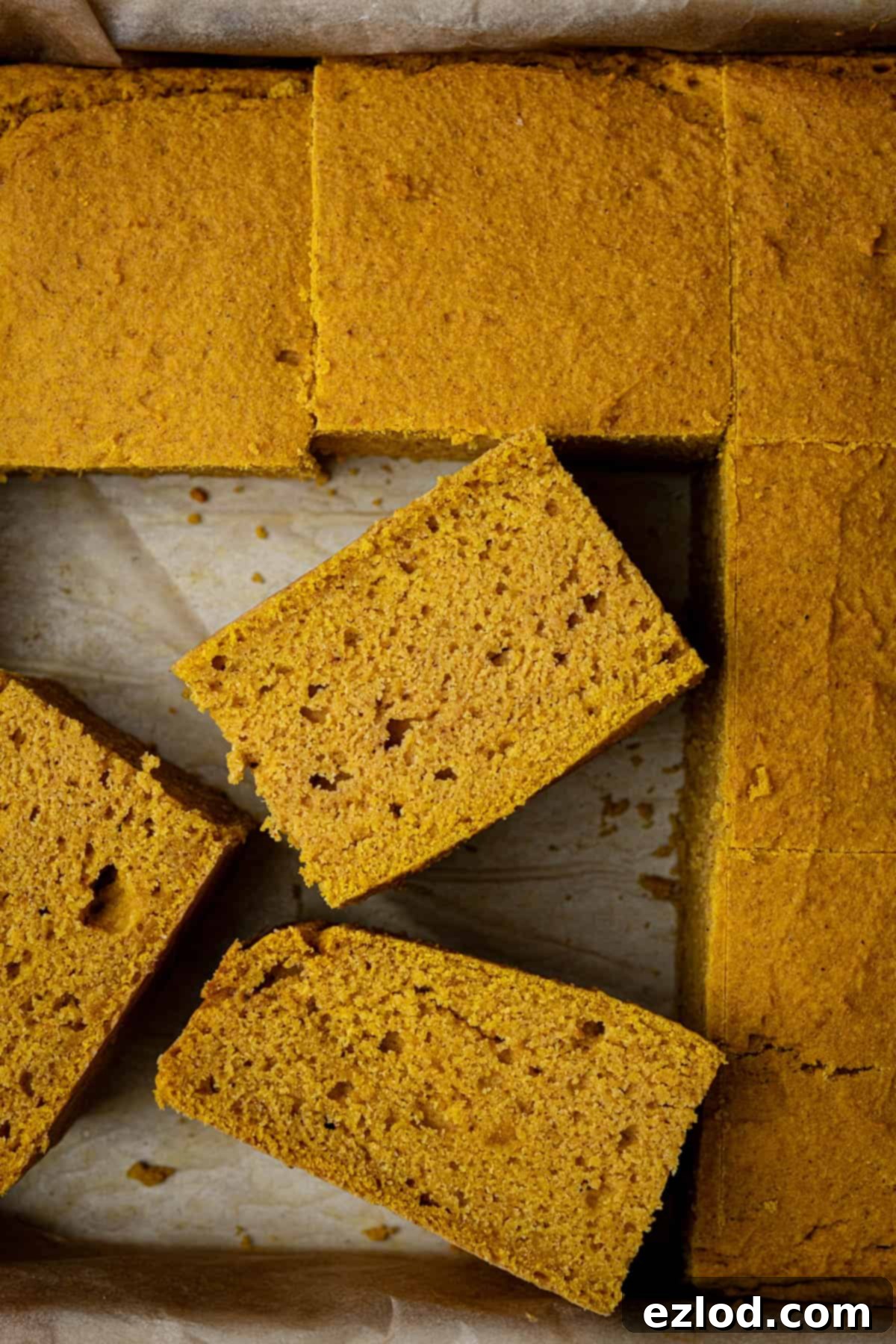Delicious Vegan Pumpkin Cornbread: Your Ultimate Fall Baking Guide
Welcome to your new favorite autumn staple! This incredibly simple and quick vegan pumpkin cornbread recipe offers a delightful twist on a classic comfort food, perfect for the crisp days of fall. Imagine a side dish that’s wonderfully soft, lusciously fluffy, perfectly moist, and boasts a tender, buttery crumb. It’s infused with a subtly sweet and gently spiced flavor that captures the essence of the season without being overpowering. What’s more, it’s effortlessly adaptable to be entirely gluten-free, making it a versatile treat for nearly everyone.
Whether you’re looking for the ideal accompaniment to a hearty bowl of soup, a rich stew, or a spicy chili, this pumpkin cornbread rises to the occasion. But its appeal doesn’t stop there; it’s so irresistibly delicious that you might find yourself enjoying it simply on its own as a satisfying snack. A warm slice, perhaps with a generous smear of vegan butter, transforms it into a moment of pure culinary bliss. For those who celebrate, this festive cornbread also makes a fantastic addition to any Thanksgiving or holiday spread, bringing seasonal cheer to your table.
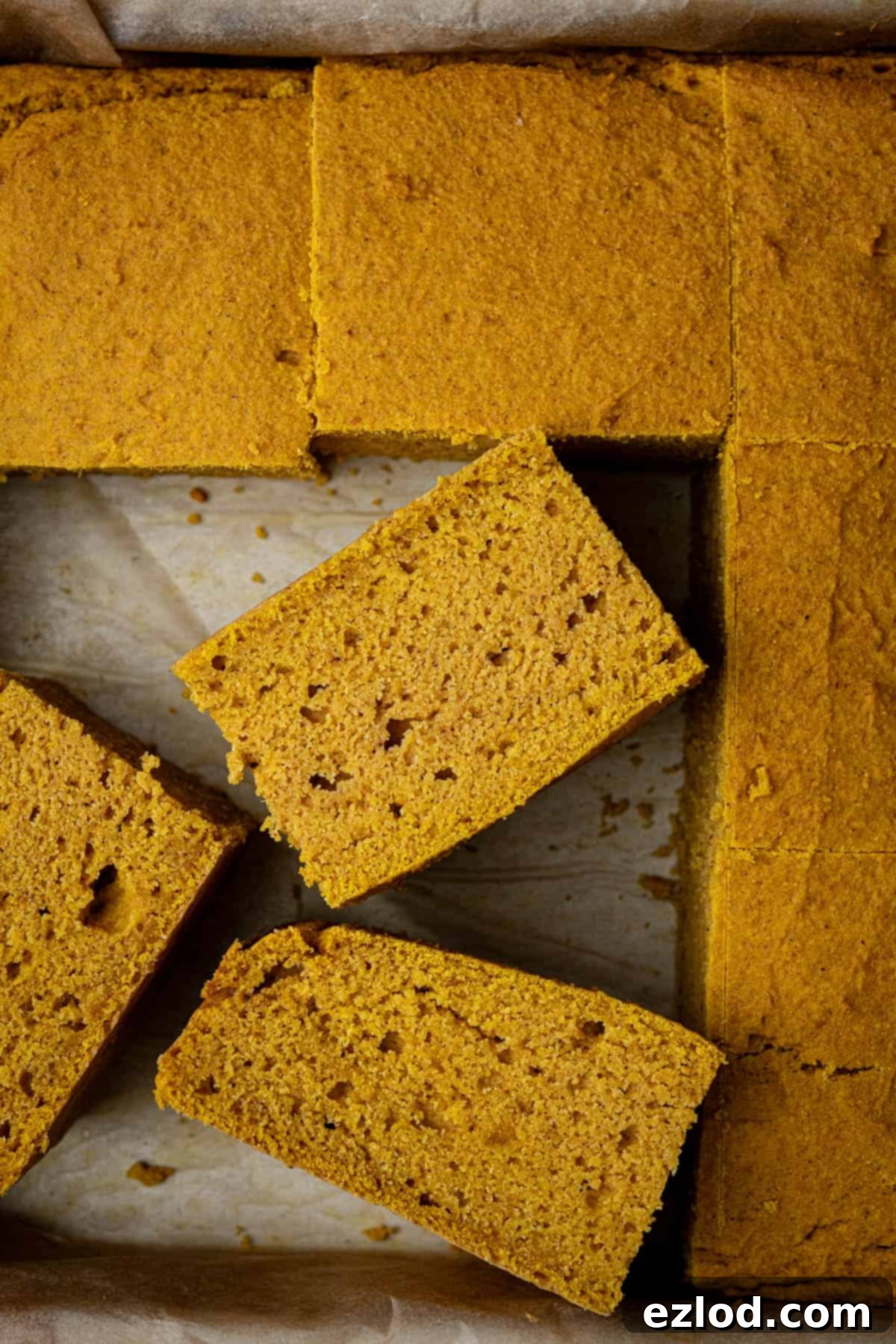
This particular recipe elevates my classic vegan cornbread by introducing the warm, earthy notes of pumpkin and a hint of spice, making it distinctly autumnal. Its flavor profile strikes a beautiful balance between sweet and savory, granting it incredible versatility in how it can be enjoyed. You have the freedom to customize the sweetness to your preference, making it more dessert-like or leaning into a savory side, depending on your meal. Furthermore, feel free to get creative with various mix-ins to truly make it your own.
Beyond its fantastic taste and adaptability, this recipe stands out for its sheer ease and speed. It comes together effortlessly in just one bowl, streamlining your kitchen cleanup. From start to finish, you can have a batch of this comforting cornbread ready to serve in a mere 30-40 minutes! This makes it perfect for busy weeknights, last-minute potlucks, or simply whenever a craving for warm, wholesome baked goods strikes. Get ready to impress your taste buds and your guests with this simple yet sophisticated fall treat!
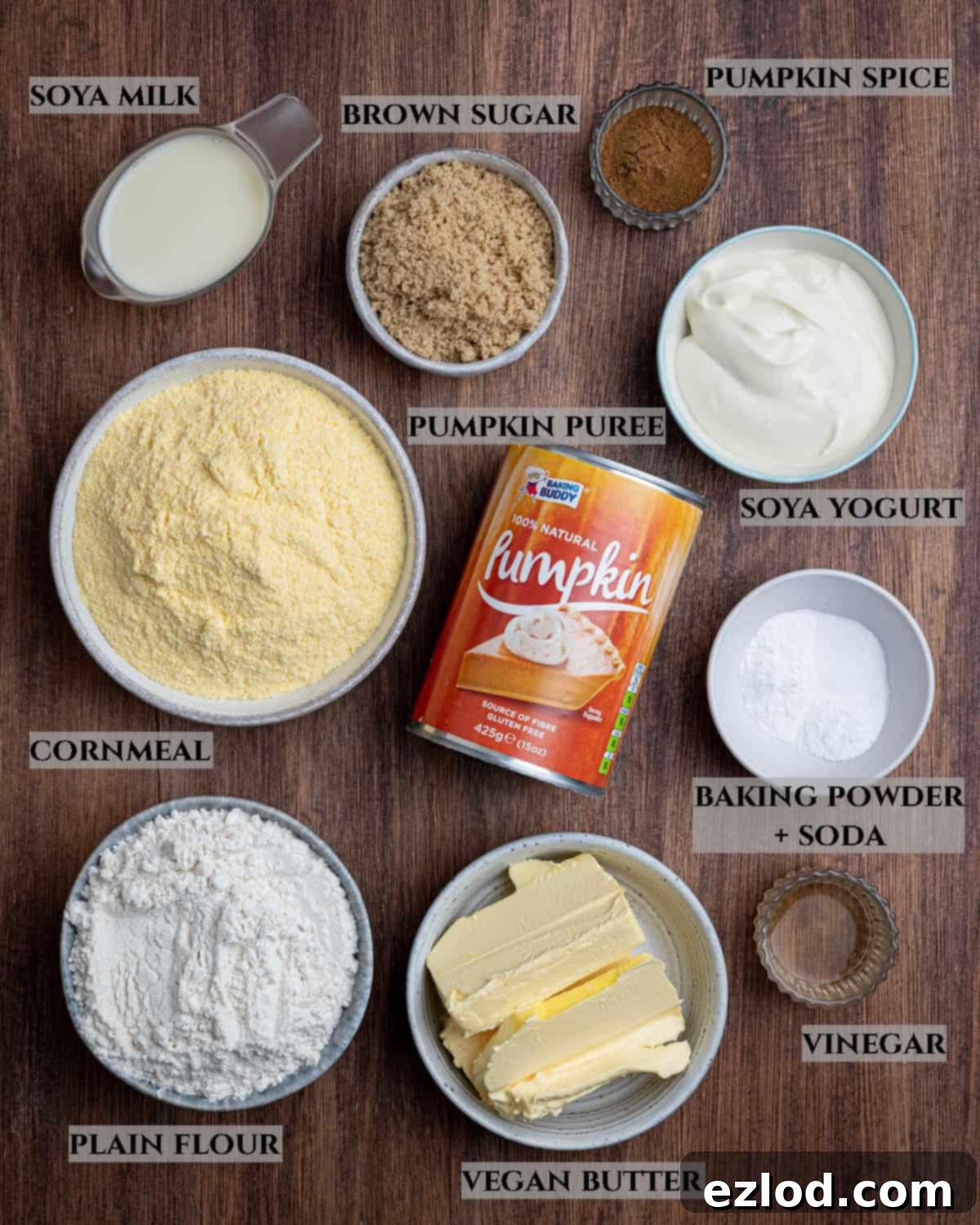
Essential Ingredients for Your Vegan Pumpkin Cornbread
Crafting the perfect vegan pumpkin cornbread begins with understanding the role of each ingredient. Here’s a detailed look at what you’ll need and why:
Tinned Pumpkin Puree: The Heart of Fall Flavor
Crucially, you must use pure pumpkin puree for this recipe, not pumpkin pie filling. Pumpkin pie filling contains added sugars and spices that will alter the flavor and texture of your cornbread, and not in a good way for this particular dish. Pure pumpkin puree provides essential moisture, a beautiful golden hue, and that unmistakable, subtly sweet and earthy pumpkin flavor that defines this autumnal treat. In many larger supermarkets across the UK, and certainly online, pure pumpkin puree is readily available, especially during the fall season. Always double-check the label to ensure you’re getting the pure, unadulterated pumpkin goodness. If you have trouble finding it, some specialty grocers or international food sections might carry it year-round.
Cornmeal: The Signature Cornbread Texture
The choice of cornmeal significantly impacts the final texture of your cornbread. For this recipe, I highly recommend using a fine or medium-ground yellow cornmeal. A finer grind will result in a more tender and cake-like crumb, while a medium grind offers a slightly heartier texture with a pleasant, subtle crunch. Avoid coarse-ground cornmeal unless you prefer a very rustic, crumbly texture, as it can sometimes make the cornbread too grainy. Yellow cornmeal also contributes to the traditional golden appearance of cornbread, enhancing its visual appeal. Ensure your cornmeal is fresh for the best flavor and texture.
Baking Powder and Bicarbonate of Soda (Baking Soda): The Dynamic Duo for Rise
Both baking powder and bicarbonate of soda (baking soda) are essential leavening agents in this recipe, and they are not interchangeable. Baking soda requires an acid to activate, which in this recipe comes from the vinegar and vegan yogurt. It creates immediate bubbles, contributing to the initial lift. Baking powder, on the other hand, is a double-acting leavener, meaning it reacts once with liquid and again with heat, providing sustained lift and a light, airy texture throughout the baking process. Using both ensures your cornbread achieves that perfect fluffy rise and tender crumb, making it airy and delightful rather than dense. Always check the expiration dates on your leavening agents to ensure they are fresh and effective.
Pumpkin Spice: A Hint of Autumnal Warmth
Pumpkin spice is a blend of warming spices that perfectly complements the pumpkin flavor. In the UK, it’s increasingly easy to find online or in well-stocked spice aisles. Alternatively, you can effortlessly make your own blend using a combination of ground cinnamon, nutmeg, ginger, and a pinch of cloves or allspice. The beauty of this ingredient is its flexibility: you can adjust the amount to suit your taste. Reduce it for a more subtle hint, increase it for a bolder spice presence, or omit it entirely if you prefer an unspiced version. If you don’t have pumpkin spice on hand, a simple touch of ground cinnamon makes an excellent substitute, providing a comforting, classic flavor.
Soya Yogurt (or Coconut Yogurt): The Vegan Egg Replacer and Moisture Provider
In this vegan recipe, plain non-dairy yogurt, preferably unsweetened soya or coconut yogurt, plays a crucial role. It effectively replaces the eggs found in traditional cornbread recipes, contributing significant moisture and helping to bind the ingredients together. Beyond its structural contributions, it also adds a subtle tang that complements the other flavors beautifully, resulting in a richer, more complex taste profile. Opting for unsweetened varieties ensures you have full control over the cornbread’s sweetness level. Always ensure your yogurt is plain, as flavored varieties will change the overall taste of your cornbread.
Brown Sugar: Sweetness and Depth of Flavor
Brown sugar adds more than just sweetness; its molasses content contributes a wonderful depth of flavor and additional moisture, resulting in a truly tender crumb. You can use either light or dark brown sugar, depending on the intensity of molasses flavor you desire – dark brown sugar will offer a richer, more caramel-like note. If you prefer a refined sugar-free option, you can easily swap the brown sugar for 60 ml (¼ cup) of maple syrup, which also introduces its own unique autumnal flavor. Adjust the amount to make your cornbread as sweet or savory as you like, or even try a mix of brown sugar and maple syrup for a complex sweetness.
Vegan Butter: For Richness and a Buttery Finish
Melted vegan butter is a cornerstone ingredient that provides essential moisture, a luxurious richness, and a classic buttery flavor to the cornbread. For the best results, I strongly recommend using a block-style vegan butter rather than a spreadable tub variety. Block butters typically have a higher fat content and a better consistency for baking, mimicking dairy butter more closely. Brands like Naturli Vegan Block or Flora Plant Butter are excellent choices. While a neutral oil (like canola or sunflower) can be used as a substitute, vegan butter truly elevates the flavor and texture of this pumpkin cornbread, giving it that familiar, comforting taste.
Plain (All-Purpose) Flour: Structure and Binding
Plain (all-purpose) flour provides the necessary structure and binding for the cornbread, working in harmony with the cornmeal to create the perfect texture. It helps ensure the cornbread holds together while remaining soft and moist. If you need to make this recipe gluten-free, simply use the same weight of a high-quality plain gluten-free flour blend. For best results with gluten-free flour, it’s often beneficial to add a ¼ teaspoon of xanthan gum if your chosen blend does not already include it, as this helps with elasticity and prevents a crumbly texture. Ensure your flour is sifted to prevent lumps in the batter.
Soya Milk: The Liquid Base
Any unsweetened non-dairy milk will work effectively in this recipe, but I personally prefer using soya milk for baking. Soya milk boasts a higher protein content compared to other plant-based milks, which can contribute to a slightly more robust structure and a better overall bake. Ensure it’s unsweetened to maintain control over the cornbread’s sweetness. Other good options include almond milk or oat milk, but results may vary slightly in terms of richness and texture. Always use a non-dairy milk that you enjoy the taste of, as its subtle flavor can come through.
Vinegar: Activating the Leavening
Vinegar, a simple yet powerful ingredient, is crucial for activating the bicarbonate of soda (baking soda). When combined, this acidic component creates a chemical reaction that produces carbon dioxide gas, which in turn helps the cornbread to rise beautifully and achieve its airy texture. White vinegar or apple cider vinegar are both suitable options; their slight acidity will do its job without imparting any noticeable flavor to the finished cornbread. Don’t skip this step, as it’s vital for a light and fluffy cornbread, especially in vegan baking where eggs aren’t providing natural lift.
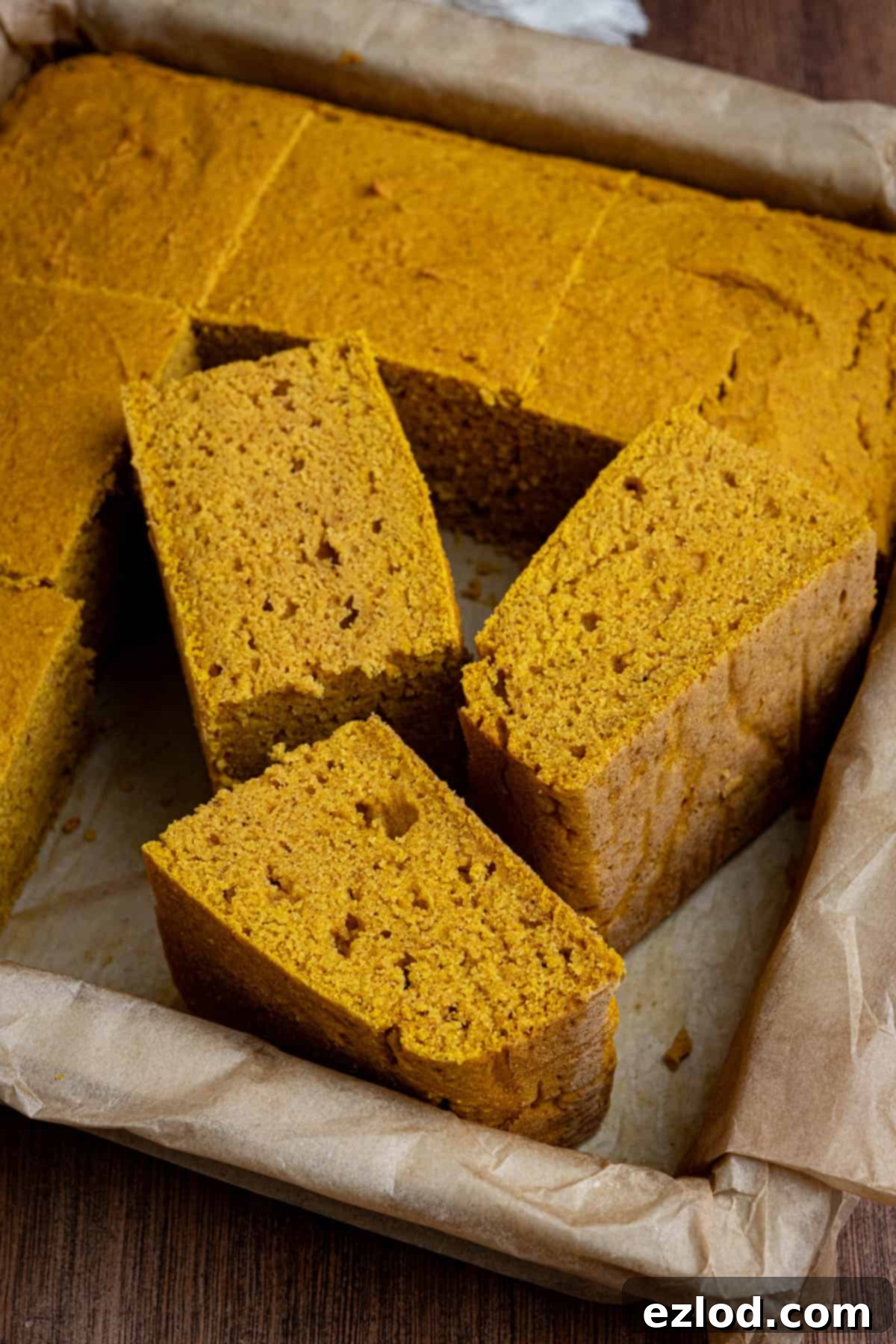
How To Make Irresistible Vegan Pumpkin Cornbread: Step-by-Step
For precise measurements and detailed instructions, please refer to the comprehensive recipe card located at the bottom of this page.
Step 1: Combine the Wet Ingredients
Begin by preheating your oven to 200°C/180°C fan/400°F/gas mark 6. This ensures the oven is at the correct temperature when your batter is ready, crucial for an even rise. Prepare a 20 cm/8 inch square cake tin by generously greasing it and lining it with baking parchment. Leave an overhang on two sides; this will act as “handles” to easily lift the baked cornbread out later. In a large mixing bowl, combine the pumpkin puree, melted vegan butter (ensure it’s not too hot), plain non-dairy yogurt, unsweetened non-dairy milk, light brown soft sugar, and vinegar. Whisk these wet ingredients together thoroughly until they are well combined and smooth, creating a homogeneous base for your cornbread.
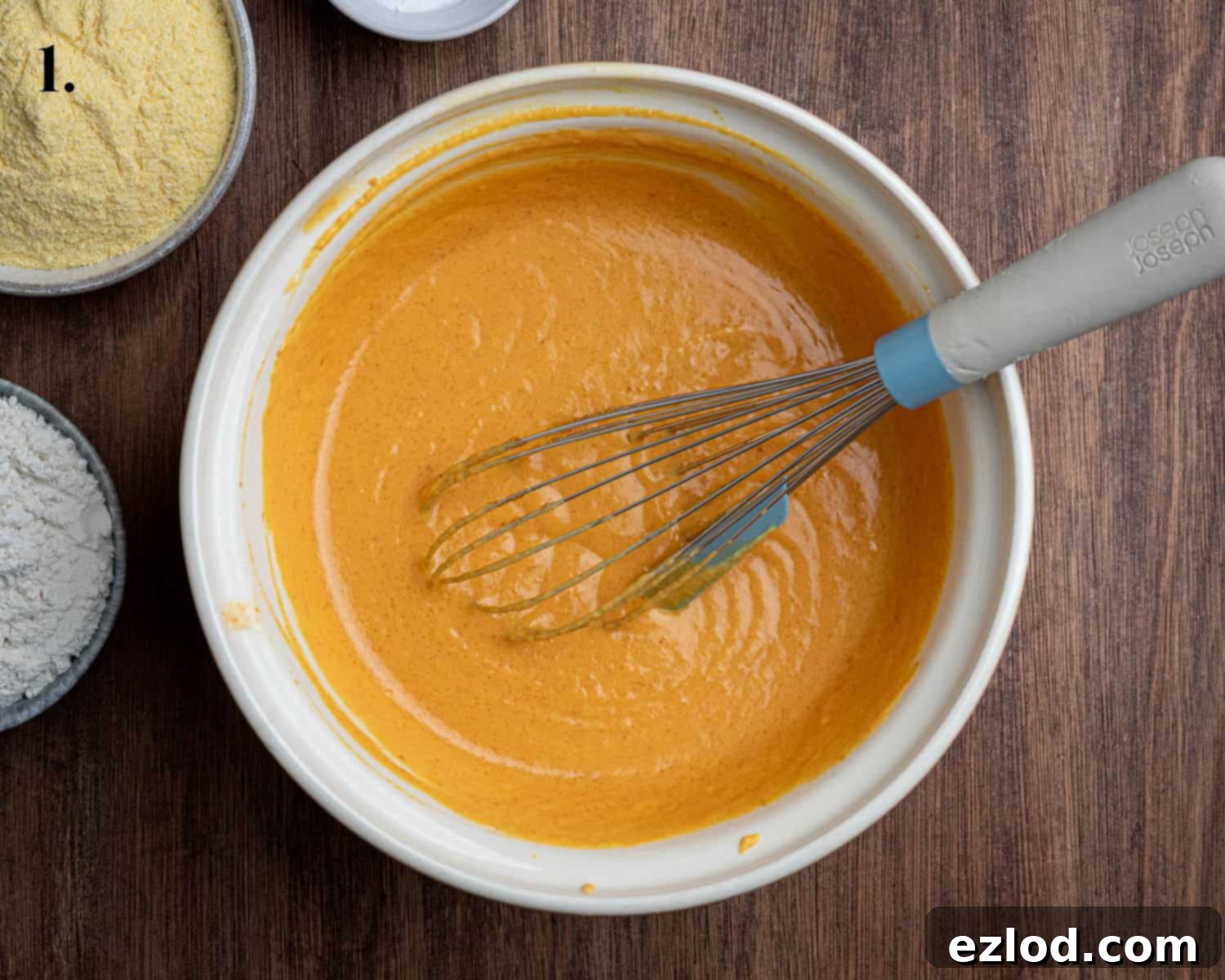
Step 2: Incorporate Dry Ingredients
To the wet mixture, add the pumpkin spice, baking powder, bicarbonate of soda (baking soda), and salt. Whisk these into the wet ingredients until just combined and evenly distributed. This ensures the leavening agents are activated properly. Then, gradually add the fine cornmeal and plain flour. Using a whisk or spatula, gently fold the dry ingredients into the wet mixture only until no streaks of flour remain. Be careful not to overmix, as this can develop the gluten in the flour and lead to a tougher, chewier cornbread. The batter will be quite thick; this is the desired consistency for a rich and moist pumpkin cornbread.
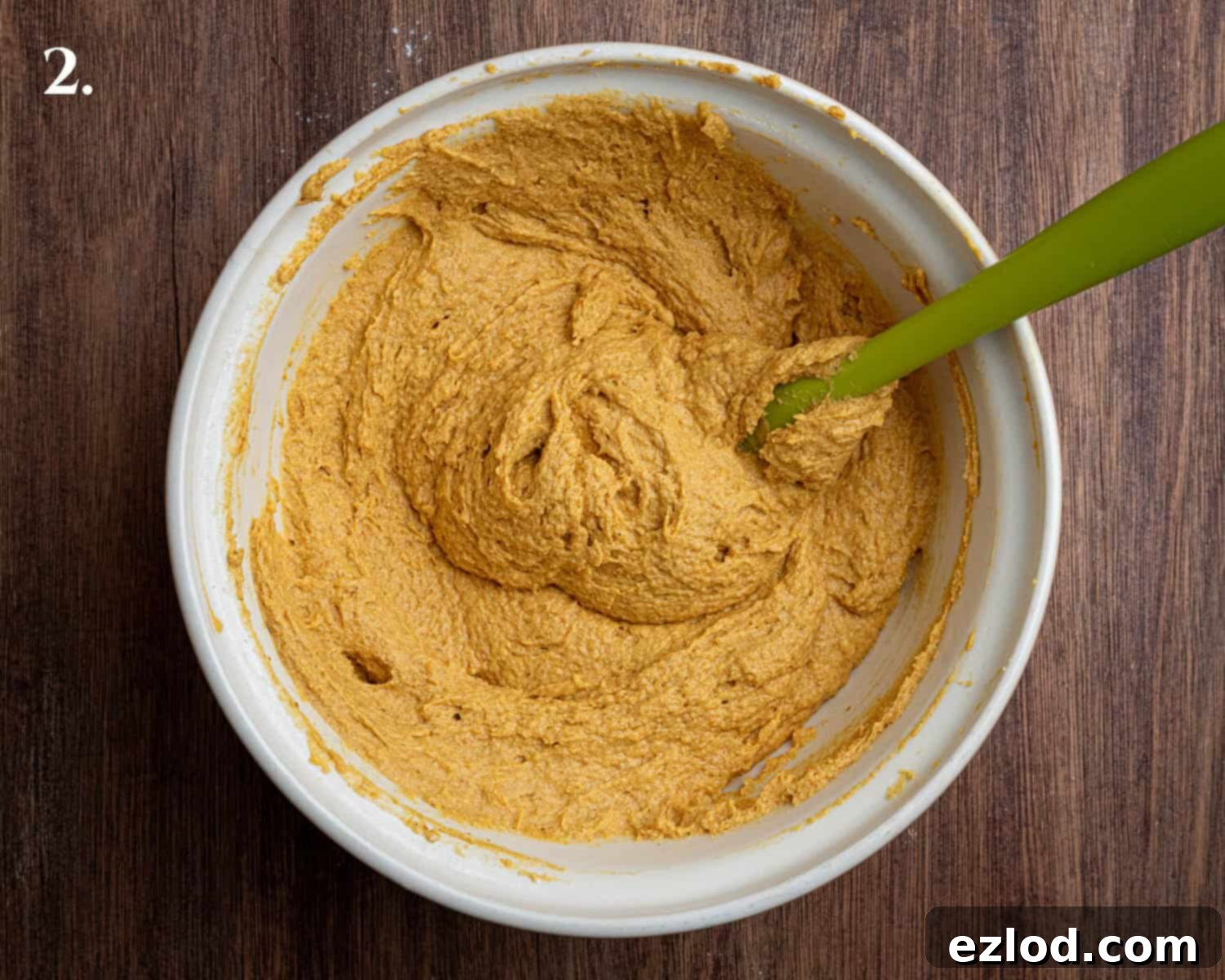
Step 3: Prepare for Baking
Once your batter is perfectly mixed, carefully transfer it into your prepared 20cm/8in square tin. Use a spatula or the back of a spoon to gently spread the batter evenly across the bottom of the tin, ensuring it is level from edge to edge. This crucial step helps ensure even baking and a consistent rise throughout the entire cornbread, preventing one part from being undercooked or overcooked compared to another. A smooth, even surface will also give your finished cornbread a beautiful appearance.
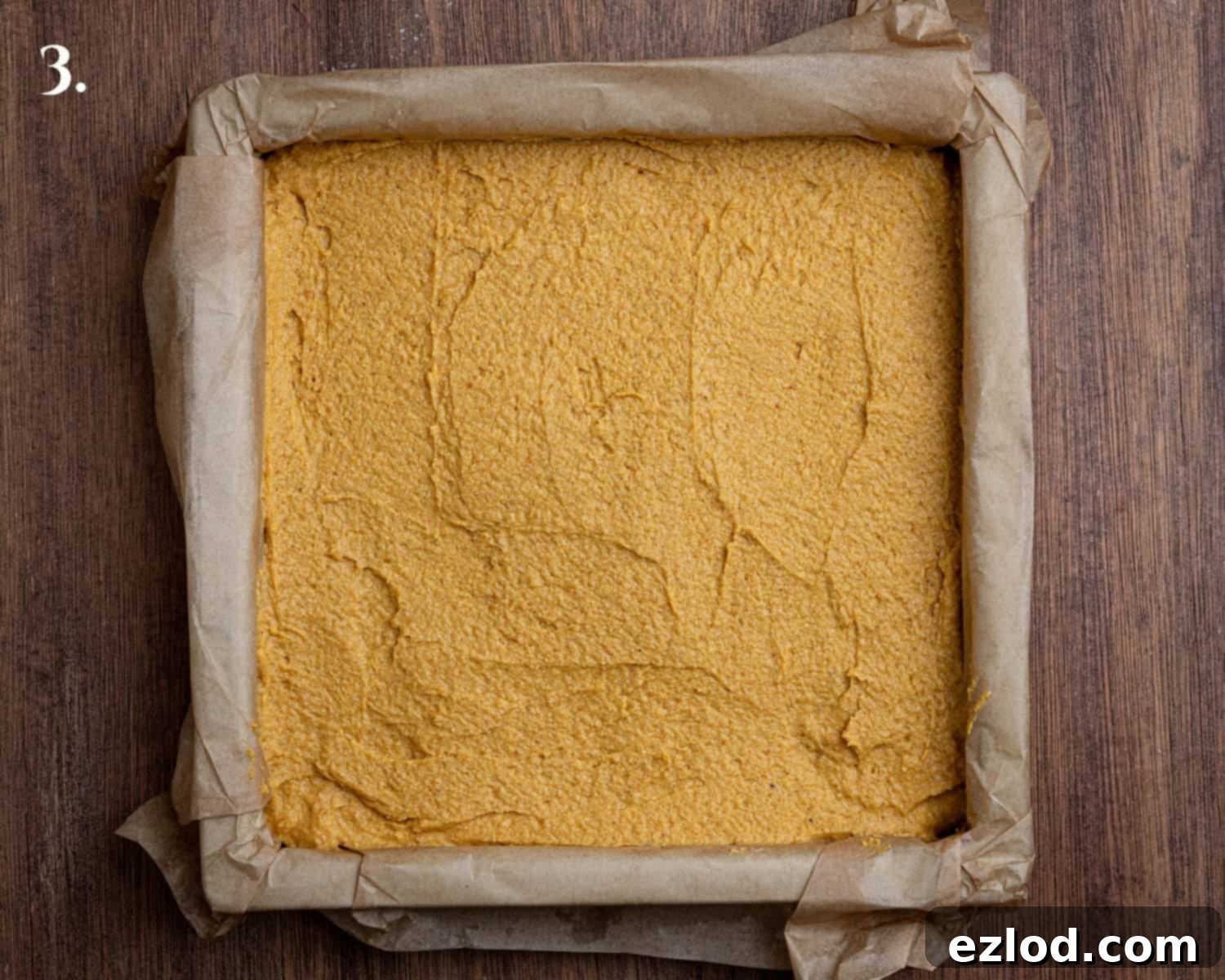
Step 4: Bake to Golden Perfection
Place the tin into your preheated oven and bake for approximately 20 minutes. Baking times can vary slightly depending on your oven’s calibration, so it’s always wise to keep an eye on it. The cornbread is ready when a wooden skewer or toothpick inserted into the center comes out clean, with no wet batter attached. The top should be beautifully golden brown, and the edges should start to pull away slightly from the sides of the tin. Once baked, remove from the oven and allow it to cool in the tin for a few minutes before slicing. This helps it set and prevents it from crumbling.
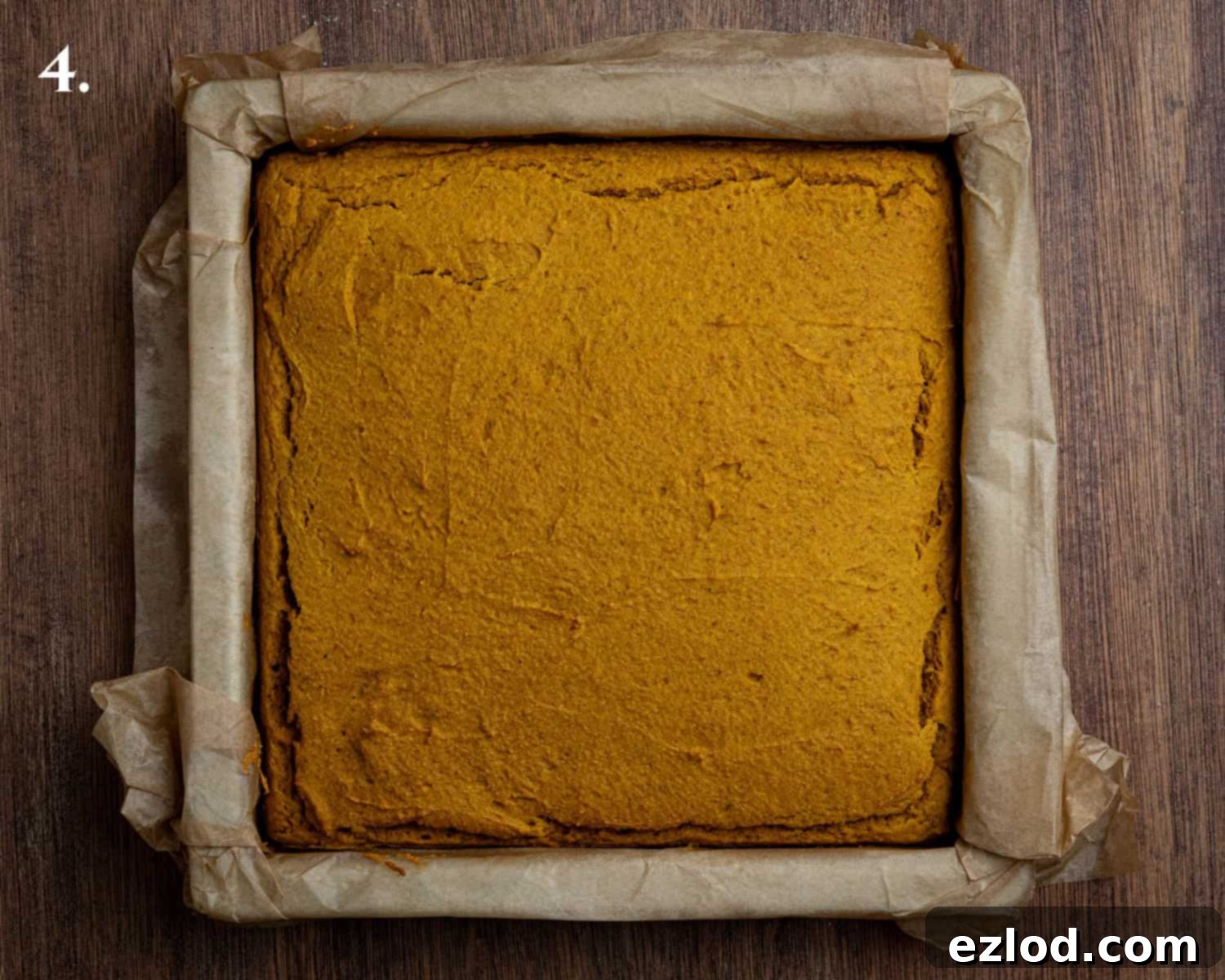
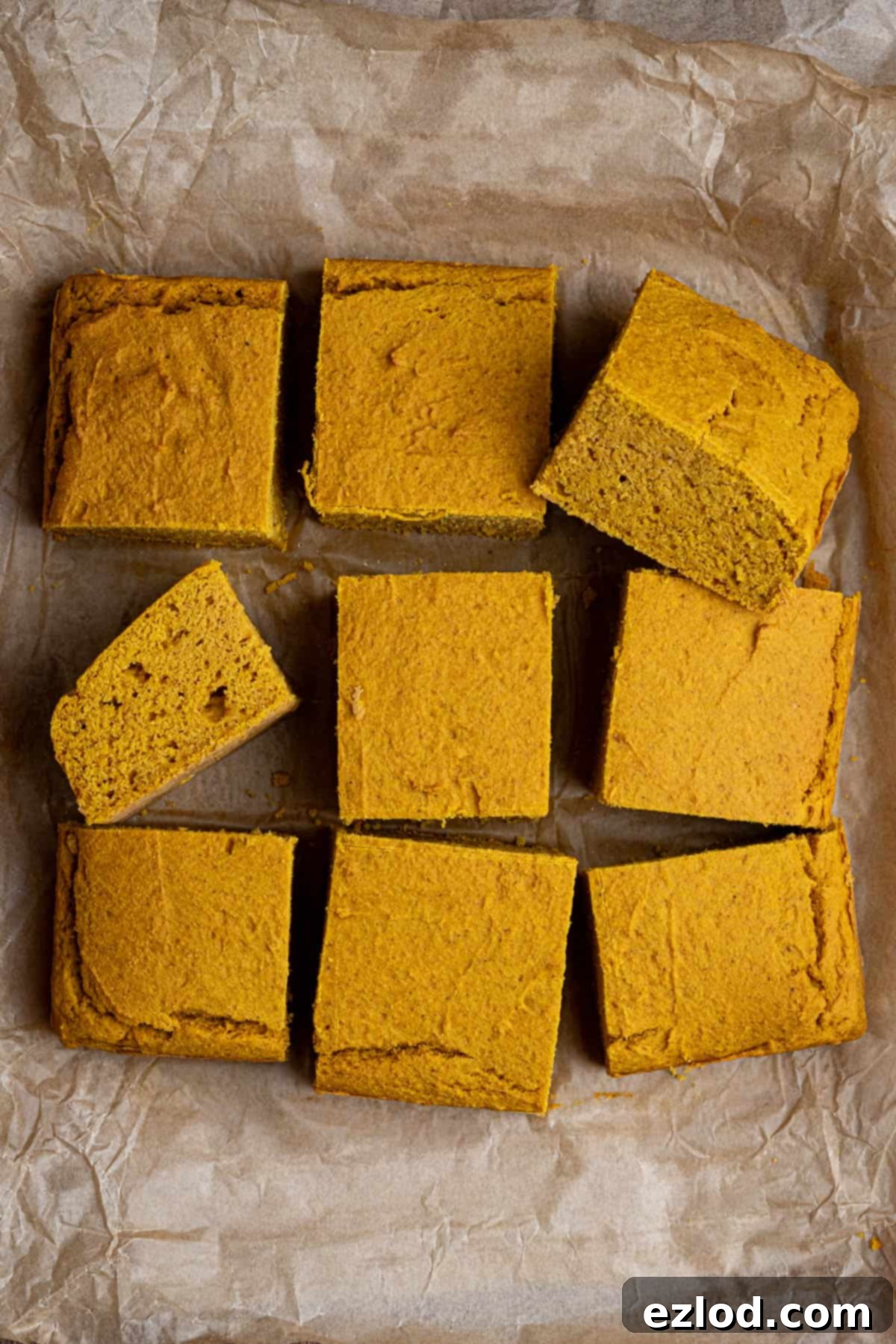
Expert Tips for Making the Best Vegan Pumpkin Cornbread
Achieving bakery-quality vegan pumpkin cornbread is simpler than you think with these expert tips:
Precision in Baking: Weigh Your Ingredients
For consistently perfect results in baking, precision is key. While cup measurements are common, they can be notoriously inaccurate due to variations in how ingredients are packed, leading to inconsistent outcomes. I cannot stress enough the importance of weighing your ingredients using gram measurements with a digital kitchen scale. This method provides far greater accuracy, ensuring your batter has the correct ratio of wet to dry ingredients, which is fundamental for the ideal texture and rise. Following gram measurements will significantly increase your chances of baking success every single time, giving you confidence in your kitchen endeavors.
Customizing Sweetness: Tailor to Your Taste
This vegan pumpkin cornbread recipe is designed with a lightly sweetened profile, making it wonderfully versatile for both sweet and savory applications. However, your preference might differ! If you enjoy a sweeter cornbread, perfect for a breakfast treat or a dessert, feel free to increase the light brown soft sugar to approximately 100g (½ cup). For those who lean towards a more savory accompaniment for chili or stew, you can easily decrease the sugar content to around 30-40g. Taste is subjective, and this recipe allows you to perfectly adjust the sweetness to complement your meal or snack, making it truly yours.
Choosing Your Fat: Butter vs. Oil
I find that melted vegan block butter (such as Naturli Vegan Block or Flora Plant Butter) yields the best flavor and a superior crumb texture for this cornbread, imparting a rich, classic buttery taste that truly elevates the experience. However, if vegan block butter isn’t available or you prefer an alternative, you can substitute it with 120 ml (½ cup) of neutral-flavored oil, such as canola, sunflower, or melted coconut oil. Keep in mind that oil will result in a slightly different, perhaps less ‘buttery’ flavor profile, but will still produce a moist and delicious cornbread. The texture might be a little denser with oil, but equally enjoyable.
Exciting Mix-Ins: Elevate Your Cornbread
While this cornbread is fantastic plain, it also serves as a wonderful canvas for creativity with various mix-ins. Don’t be afraid to experiment to suit your preferences! Consider adding a half cup of well-drained tinned sweetcorn for bursts of sweetness and texture, finely chopped jalapeños for a subtle kick, or sliced spring onions for a fresh, savory note. Fresh herbs like chives or rosemary, finely chopped, can add an aromatic touch. For a different texture, try a handful of pumpkin seeds (pepitas) or other chopped nuts like pecans. Vegan cheese shreds can add a savory, cheesy depth, while dried cranberries or even fresh blueberries can introduce a delightful sweet-tart contrast. Just fold them gently into the batter before baking.
Storage and Freezing for Freshness
Proper storage ensures your delicious cornbread remains fresh and enjoyable for longer. Store any leftovers in an airtight container at room temperature for up to four days. This helps to maintain its moisture and prevent it from drying out. If you’ve made a larger batch or want to enjoy this treat beyond a few days, it freezes exceptionally well. Simply wrap individual slices or the entire batch tightly in plastic wrap, then place in a freezer-safe bag or container. When ready to serve, thaw at room temperature for a few hours and then refresh in a low oven (around 150°C/300°F) for 5-10 minutes to bring back that warm, fresh-baked texture and aroma.
Frequently Asked Questions About Vegan Pumpkin Cornbread
To maintain its delightful moisture and freshness, store your vegan pumpkin cornbread in an airtight container at room temperature. It will keep beautifully for up to four days. For longer storage, see the freezing tip below.
Absolutely! This vegan pumpkin cornbread freezes exceptionally well. You can freeze it as a whole loaf, or pre-slice it into individual squares for convenience. Wrap it tightly in cling film or foil, then place it in an airtight freezer-safe container or bag. To serve, allow it to defrost at room temperature, then for that ‘freshly baked’ warmth and texture, refresh it in a low oven (around 150°C/300°F) for 5-10 minutes.
Yes, making this cornbread gluten-free is very straightforward! Cornmeal is naturally gluten-free. Simply substitute the plain (all-purpose) flour with the same weight of your preferred high-quality plain gluten-free flour blend. If your chosen gluten-free flour blend does not already contain xanthan gum, I recommend adding ¼ teaspoon of it. Xanthan gum acts as a binder, providing elasticity and preventing the cornbread from becoming too crumbly, which can sometimes happen with gluten-free bakes.
This versatile cornbread is incredibly delicious served in many ways! It’s fantastic for dunking into hearty soups or rich stews. It also makes an excellent side dish for a comforting chilli, complementing the spice with its subtle sweetness. For a simpler pleasure, enjoy it on its own with a generous spread of vegan butter. For an extra special treat, add a dollop of blackberry jam or your favorite fruit preserves – the sweet and tangy notes are a wonderful contrast to the pumpkin and corn flavors.
Absolutely! If you’re cooking for fewer people or simply want a smaller amount, you can easily halve this recipe. A half batch works perfectly in a 2lb loaf tin, yielding a delicious and manageable portion. Just remember to halve all ingredients precisely, preferably by weight, to maintain the correct ratios for a successful bake.
Dry or crumbly cornbread can often be attributed to a few factors: overmixing the batter, which develops too much gluten (even in gluten-free flours if no xanthan gum is present), or overbaking. Ensure you mix the dry ingredients into the wet only until just combined, and always check for doneness with a skewer a few minutes before the suggested baking time is up. If using gluten-free flour, ensure it has xanthan gum or add a quarter teaspoon to prevent crumbliness, as mentioned in the GF section.
While tinned pumpkin puree is recommended for convenience and consistent moisture content, you can certainly use fresh homemade pumpkin puree. You’ll need to roast, boil, or steam pumpkin chunks until very tender, then mash or blend them into a smooth puree. It’s crucial to ensure your homemade puree is thick and not watery, as excess moisture can significantly affect the cornbread’s texture and baking time. You’ll need about 300g of cooled homemade puree for this recipe.
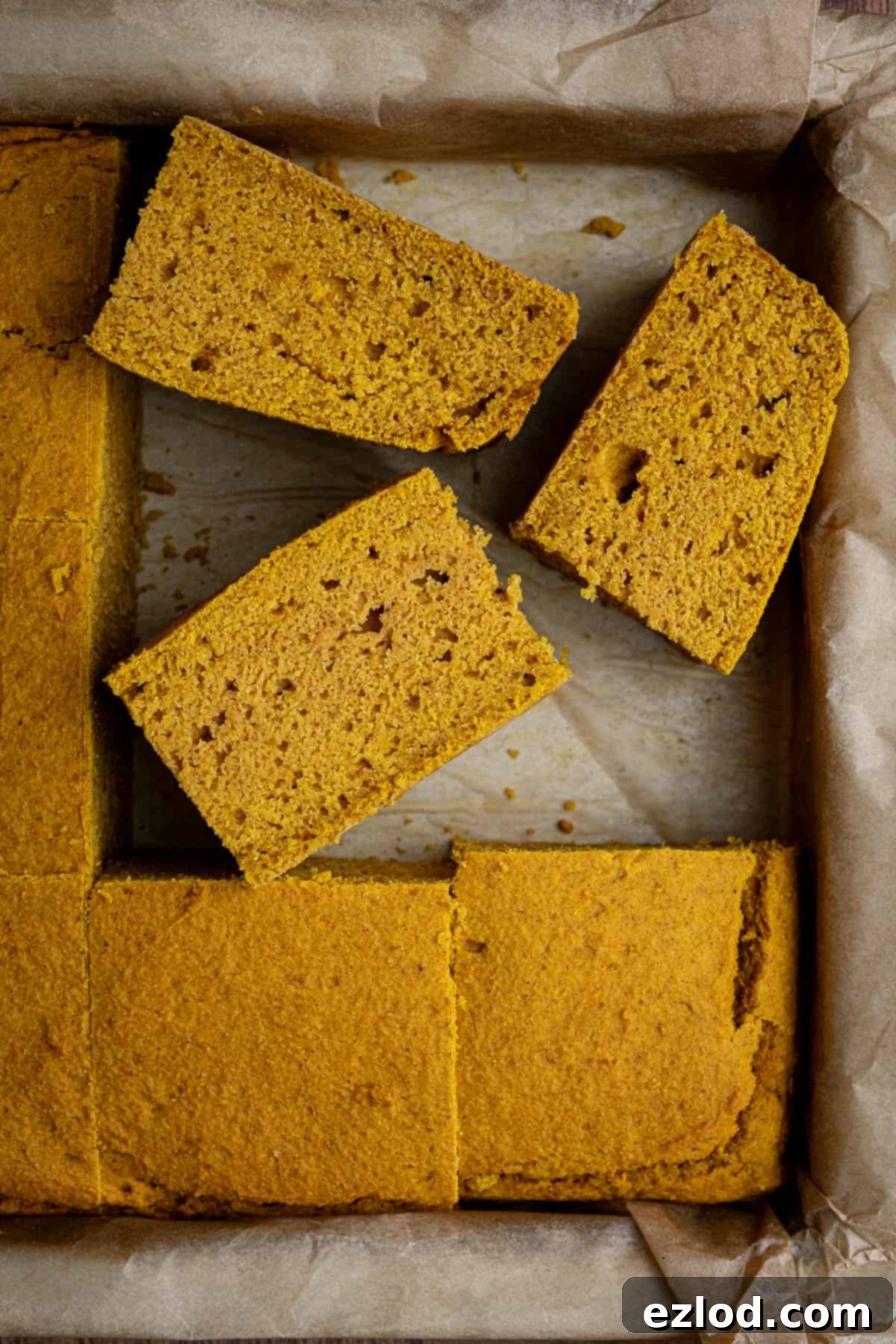
If you’ve had the pleasure of trying this wonderful recipe, we’d love to hear from you! Please consider rating it, leaving a comment below with your feedback, or sharing your creations on Instagram. Don’t forget to tag @domestic_gothess and use the hashtag #domesticgothess so we can see your delicious results!
All images and content on Domestic Gothess are copyright protected. If you wish to share this recipe, kindly do so by utilizing the provided share buttons. Please refrain from screenshotting or posting the recipe or content in its entirety; instead, include a direct link to this post for the complete recipe. Your understanding and cooperation are greatly appreciated.
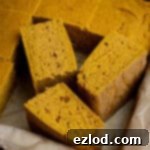
Vegan Pumpkin Cornbread
Ingredients
- 300 g (1 ¼ cups) pumpkin puree
- 120 g (½ cup) vegan block butter melted
- 120 g (½ cup) plain non-dairy yogurt (I use soy)
- 60 ml (¼ cup) unsweetened non-dairy milk (I use soy)
- 60 g (⅓ cup) light brown soft sugar
- 2 teaspoons vinegar
- 2 teaspoons pumpkin spice
- 2 teaspoons baking powder
- 1 teaspoon bicarbonate of soda (baking soda)
- ½ teaspoon salt
- 175 g (1 cup + 2 Tablespoons) fine cornmeal
- 150 g (1 ¼ cups) plain (all-purpose) flour
Instructions
-
Heat the oven to 200°C/180°C fan/400°F/gas mark 6. Grease a 20 cm/8 inch square cake tin and line with baking parchment.
-
Whisk together the pumpkin puree, melted butter, yogurt, milk, brown sugar and vinegar in a large bowl.
-
Whisk in the pumpkin spice, baking powder, bicarbonate of soda and salt, followed by the cornmeal and plain flour. The batter will be quite thick.
-
Transfer the batter to the prepared tin and spread it level.
-
Bake for about 20 minutes until a skewer inserted into the centre comes out clean.
-
Leave to cool in the tin then slice into squares and serve. Store any leftovers in an airtight container for up to four days.
Notes
- See post above for additional tips, ingredient details, and step-by-step photos that will guide you to baking perfection.
- For the best and most consistent results, always weigh your ingredients using gram measurements with a digital scale, rather than cup conversions. This precision is vital in baking.
- This recipe offers a lightly sweetened cornbread. Adjust the sugar to your preference: increase to 100g (½ cup) for a sweeter treat, or decrease for a more savory accompaniment.
- While melted vegan block butter (such as Naturli Vegan Block or Flora Plant Butter) is recommended for its rich flavor and texture, you can substitute with 120 ml (½ cup) of neutral-flavored oil if preferred.
- Feel free to customize your cornbread with mix-ins! Options include well-drained tinned sweetcorn, chopped jalapeños, spring onions, fresh herbs, pumpkin seeds, vegan cheese, chopped nuts, dried cranberries, or even fresh blueberries.
